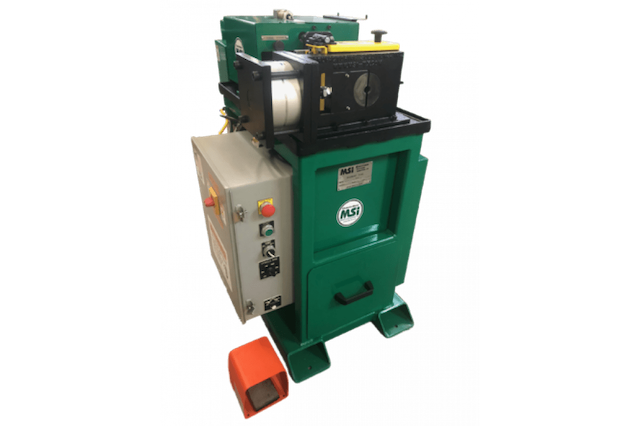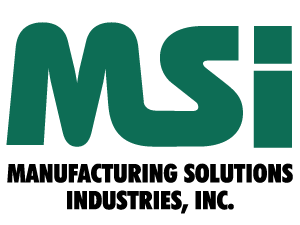
In the precision manufacturing industry, the quality of edge finishing can make or break a component’s functionality, safety, and aesthetic appeal. Chamfering machines play a crucial role in this process, delivering consistent and precise edge treatments across various materials and applications. At Manufacturing Solutions Industries, Inc., we understand that optimizing your production processes requires thorough knowledge of the equipment involved. This article explains the fundamental functions of chamfering machines and how they contribute to manufacturing excellence.
What is a Chamfering Machine?
A chamfering machine is specialized equipment designed to create beveled edges, or “chamfers,” on workpieces. These bevels serve multiple purposes in manufacturing, from deburring sharp edges to preparing surfaces for welding or assembly. Modern chamfering machines combine precision engineering with advanced automation to deliver reliable, repeatable results across high-volume production runs.
Core Functions of Chamfering Machines
- Edge Preparation and Deburring
The primary function of a chamfering machine is to remove sharp edges and burrs that result from cutting, machining, or fabrication processes. By creating a beveled edge, these machines:
- Eliminate safety hazards associated with sharp edges
- Prepare parts for subsequent manufacturing steps
- Improve the overall quality and appearance of finished components
- Reduce the risk of edge chipping or fracturing during handling
- Controlled Material Removal
Modern chamfering machines offer precise control over the chamfering angle and depth. This level of control allows manufacturers to:
- Maintain tight tolerances on chamfer dimensions
- Adjust settings for different materials and hardnesses
- Create consistent chamfers across identical parts
- Implement specific chamfer profiles required by engineering specifications
- Surface Preparation
Beyond basic edge treatment, chamfering machines prepare surfaces for additional manufacturing processes:
- Creating weld preparation bevels for improved joint integrity
- Forming lead-in edges for easier assembly
- Preparing edges for painting, coating, or finishing operations
- Facilitating proper fit between mating components
Types of Chamfering Machines and Their Functions
CNC Chamfering Machines
Computer Numerical Control (CNC) chamfering machines offer unparalleled precision and versatility. These systems:
- Very expensive to purchase
- Require extensive training for programming
- Require trained personnel to operate
- Execute complex chamfering operations based on digital specifications
- Maintain consistent quality across high-volume production runs
Manual and Semi-Automatic Chamfering Equipment
For smaller operations or specialized applications, manual and semi-automatic chamfering machines provide:
- Cost-effective solutions for lower production volumes
- Flexibility for custom or one-off parts
- Operator control for variable chamfering requirements
- Simple operation with minimal training requirements
Specialized Chamfering Solutions
Industry-specific chamfering machines address unique manufacturing challenges:
- Tube and pipe chamfering machines for welding preparation
- Heavy-duty systems for structural steel components
- Precision micro-chamfering for electronic or medical components
- Multi-axis systems for complex geometries
Material Considerations in Chamfering Operations
The function of a chamfering machine must be matched to the material being processed:
- Metals: Varying hardness levels require appropriate cutting tools and speeds
- Plastics: Heat management becomes critical to prevent melting or deformation
- Composites: Special techniques prevent delamination or fiber tearout
- Ceramics: Diamond tooling and controlled feed rates prevent breakage
Benefits of Advanced Chamfering Machine Functions
Today’s leading chamfering machines incorporate features that enhance manufacturing efficiency:
- Quick-change tooling systems for minimal downtime
- Automated measurement and quality verification
- Tool wear compensation for consistent results
- Remote monitoring and diagnostics capabilities
- Integration with Industry 4.0 networks and systems
Optimizing Chamfering Operations
To maximize the value of chamfering equipment, manufacturers should:
- Select the appropriate machine for their specific material and production requirements
- Implement proper maintenance schedules to ensure consistent performance
- Train operators on optimal machine settings and operations
- Consider the entire manufacturing workflow when integrating chamfering processes
Conclusion
Chamfering machines perform essential functions in modern manufacturing, from basic edge preparation to precision surface treatments that enable complex assemblies. Understanding the capabilities and applications of these machines allows manufacturers to improve product quality, enhance worker safety, and optimize production efficiency.
At Manufacturing Solutions Industries, Inc., we provide comprehensive chamfering solutions tailored to your specific manufacturing challenges. Our expertise in precision edge treatment technologies ensures that your products meet the highest standards of quality and performance.
Contact MSI today to discuss your project requirements!
 Products proudly made in the USA
Products proudly made in the USA